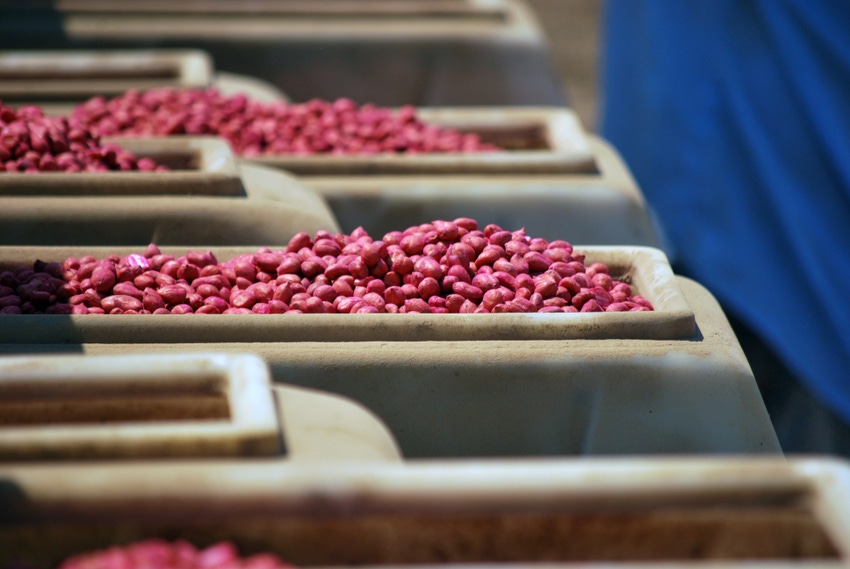
Long before I knew anything about tomato spotted wilt, nematodes or white mold, a brief stint in the US Army was shaping much of who I am today. Those days forever affected my approach to trainings and presentations I now give to growers.
Not only do I want every presentation to have immediate impact, but my format “tell them what you will teach them; teach them; then tell them what you taught them” was ingrained in me time and time again by sergeants whose names, but not faces, are long forgotten. My buddies and I learned about everything from M-16 rifles to management of chemical decontamination facilities.
These days, I target a different kind of enemy: an enemy that attacks our crops and farmers’ livelihoods.
I have started grower meeting this winter with my hand held in the air, noting that I have five central points:
The importance of climate forecasts when developing a pest management program.
The harsh truth that growers have only one chance to effectively manage nematodes and some important diseases.
That to make the most profitable crop growers may need to invest in a costlier program.
That stocks of chlorothalonil are likely to be short this season.
That a capable cadre of Extension agents are here to help them.
The part about one chance; don’t miss it is perhaps the most important point now before most crops are planted.
What do tomato spotted wilt, Aspergillus crown rot, Cylindrocladium black rot, Diplodia collar rot, seedling diseases, and nematodes all have in common? Yes, they are examples of problems affecting one or more of our row crops, and yes, they cost growers millions of dollars in lost yields and cost of management. However, they also share something else. The opportunity to manage each of these is largely over when the seed is covered in the furrow. After that, growers will manage many other aspects of the growth and development of the crop. However little (or nothing) can be done to mitigate losses to these specific problems.
In the mid-1990s tomato spotted wilt threatened the survival of the peanut industry in the southeastern United States. Since that time, growers have successfully battled the disease by planting varieties with improved resistance and by using Peanut Rx, a tool that helps to identify the risk to tomato spotted wilt and to assess how adoption of various practices will reduce this risk.
In 2017, overall losses to spotted wilt were estimated to be about 3 percent, though this number is deceptively low. While many growers experienced small losses to this disease, disease severity in some fields was found to be as much as 30 percent of the plants. Losses in these fields would certainly rival losses that occurred 25 years ago. Typically, the full extent of damage from tomato spotted wilt is not observed until late in the season. At that point, there is nothing that to be done except determine if the damage will necessitate and earlier digging date.
To reduce the risk to tomato spotted wilt on peanut, growers need to make favorable decisions very early in the season. Peanut Rx is the tool that allows growers to do that. For example, some varieties are more resistant to the disease and some varieties are more susceptible. Planting dates affect risk to tomato spotted wilt, as does seeding rate (and plant stand), tillage (conventional of conservation), row spacing (single or twin) and choice of at-plant insecticide.
While a number of products reduce early-season damage from thrips, only Thimet 20G reduces the risk to damage from tomato spotted wilt. Apparently, use of Thimet 20Gactivates a defense response in the peanut plant that helps to protect the plant from the disease. Growers can reduce their risk to tomato spotted wilt using different combinations of production factors; however, the opportunity to do so is largely over when the furrow is covered.
Growers also have basically one chance to fight nematodes, to fight CBR, to fight Aspergillus crown rot, and to fight seedling diseases. In-furrow fungicides, seed treatments, nematicides and resistant varieties are important weapons that the grower can use to protect their crop and their yields. These tools generally add expense to the total cost of production, so they should be used where they are likely to be needed. However, there is no second chance.
Decisions made prior to and at planting will have a significant impact on the rest of the season; making the best decisions will impact the entire season.
At the end of my final winter meeting, one peanut farmer announced my five points, especially the one about no second chances, made him feel anxious about the 2018 season. That he felt the urgency of my message is proof that the Army Way still works today; tell them, teach them, remind them. The only difference now is that I’m rarely ordered to “drop and give me 10, make that 20, Kemerait, you MORON……”
About the Author(s)
You May Also Like






